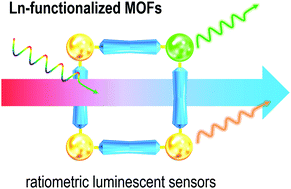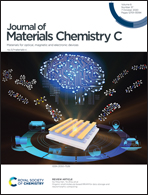Lanthanide-functionalized metal–organic frameworks as ratiometric luminescent sensors
Abstract
Metal–orgainc frameworks (MOFs) are a class of hybrid inorganic/organic framework materials and have been widely used in smart sensing. Among them, MOF-based monochromatic luminescent sensors display a limited detecting accuracy due to their easily disturbed signal. Combining the merits of lanthanide (Ln) luminescence with a porous skeleton, Ln-functionalized dual/multiple-emitting metal–organic frameworks (MOFs) have exhibited potential applications in ratiometric luminescence sensing with high accuracy, antijamming, sensitivity, and selectivity. Through rational design or post-modification, MOFs can be endowed with intrinsic emissions from Ln ions, ligands, or other luminescent materials and served as advanced detection materials for a wide variety of analytes via the linear variation of the ratio of luminescence intensities. Herein, we have summarized the recent progress of Ln-functionalized MOF-based ratiometric probes in sensing analytes in organic solvents, aqueous systems, and gas phase as well as in detecting temperature and pH. According to the possible origin of emissions, three strategies, including embedding additional luminescent species, modulating “antenna effect”, and mixed-Ln-based MOFs, are put forward for the construction of dual-emitting materials with high sensing performance.

- This article is part of the themed collection: Journal of Materials Chemistry C Recent Review Articles


 Please wait while we load your content...
Please wait while we load your content...